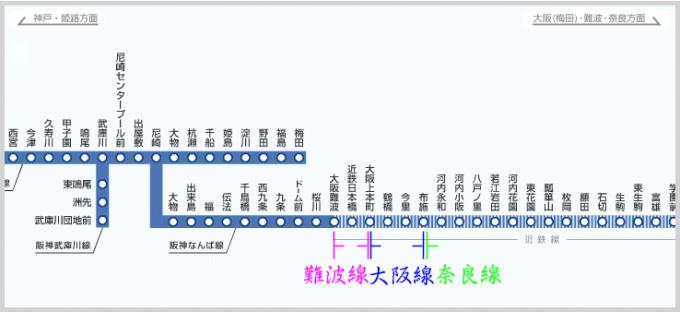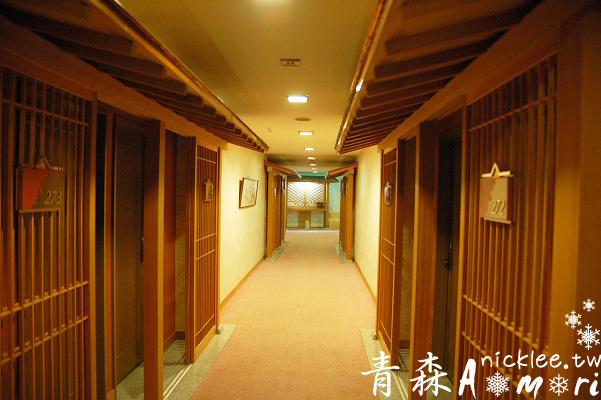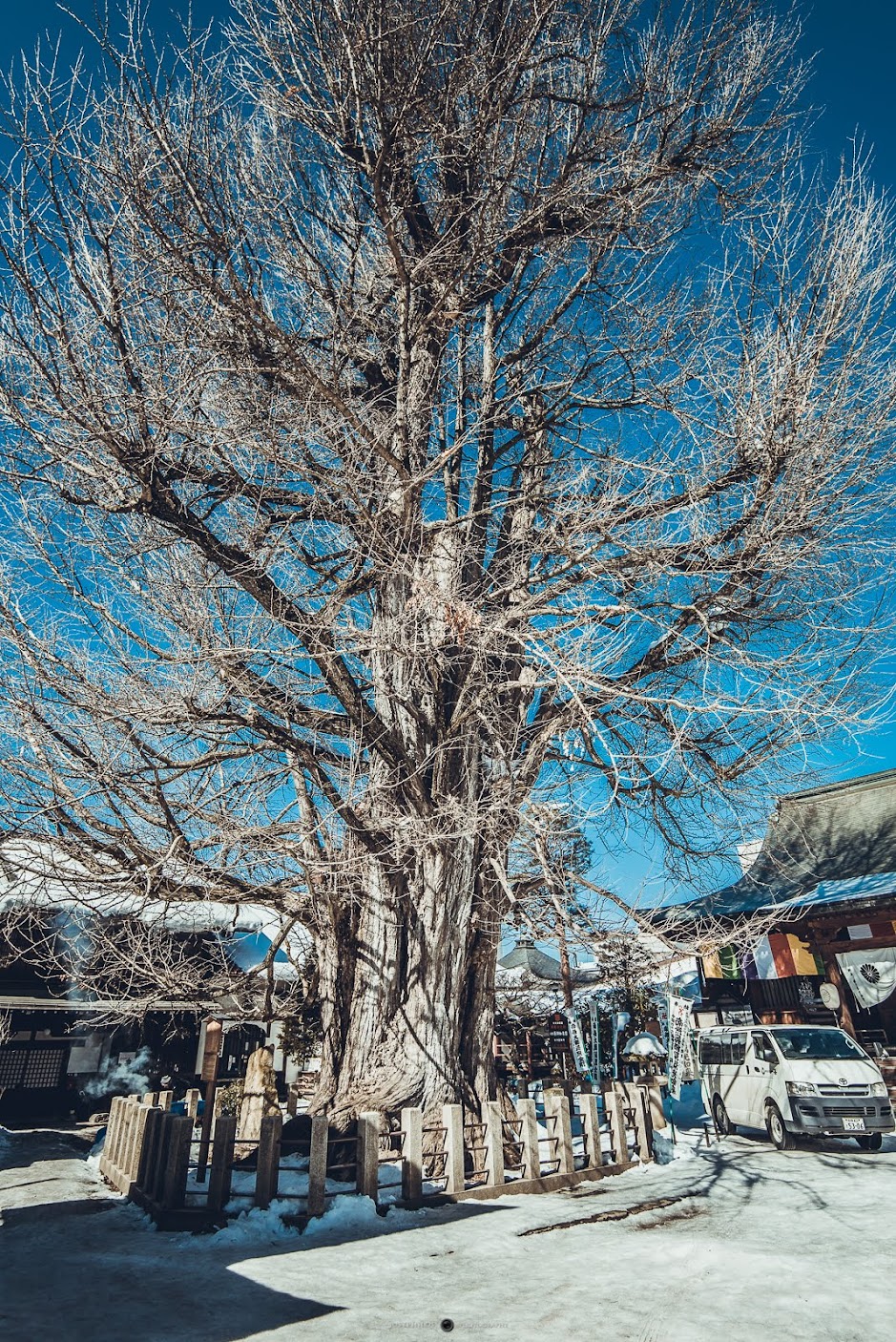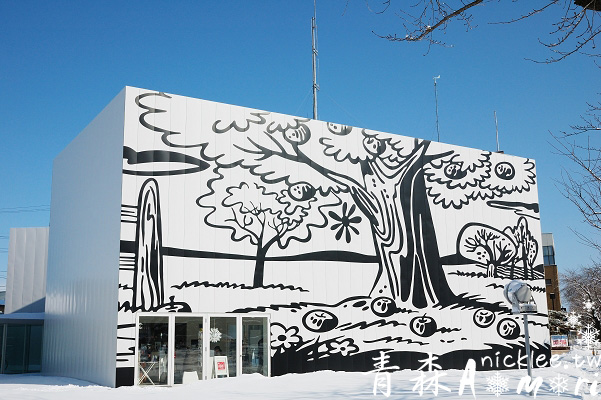Japan has a well-developed transportation system, with many public and private railways providing services. Originally, each railway company operated its own trains only on its own tracks. However, it was not economically efficient for each train to only operate within a small range. Therefore, cooperation between railway companies was established. The so-called through operation means that Company A’s train can run on Company B’s tracks, and Company B’s train can also run on Company A’s tracks. These railways are both competitors and collaborators. The purpose of cooperation is to reduce the number of transfers for passengers and improve passenger efficiency.
For example, if we originally wanted to travel from Hankyu Kobe Sannomiya Station to Kintetsu Nara, under normal circumstances, we would need to take a train to Osaka Namba Station, then exit the station and enter another station to take a train to Kintetsu Nara. With through operation, we can directly take a train to Kintetsu Nara without getting off and transferring in the middle, saving time and trouble. Therefore, when taking the train, be careful not to oversleep and end up in another city… XD

When the car of Company A reaches the railway of Company B, how should the fare be calculated? Basically, the fare is calculated the same way before and after cooperation. Payment is based on the distance traveled on the route. If you board the car on Company A’s route and get off on Company B’s route, you will have to pay the fare separately to Company A and Company B. (When purchasing tickets, you can directly buy tickets to your destination at the self-service ticket machine. If you pay with an IC card, the fare will be automatically calculated.)
Taking the example of taking the Hankyu Kobe-Sannomiya Station to the Kintetsu Nara Station, the original fare from Kobe-Sannomiya Station to Osaka-Namba is ¥410, and from Osaka-Namba to Kintetsu Nara is ¥560. Therefore, the fare for you to directly take the train from Kobe-Sannomiya to Kintetsu Nara is equal to 410+560=970.

Currently, the railway sections with direct connections in the Kansai region are as follows.
(Note!! The following images are taken from various official websites, it is recommended to use them in conjunction)
[Osaka]
Before proceeding with this section, please make sure you have read the following article: A Beginner’s Guide to Understanding Osaka’s Transportation.
★ Osaka Subway and Hokushin Kyuko Railway
Routes: Osaka Subway – Midosuji Line ← “Esaka” → Hokushin Kyuko Line
Explanation:
1. Esaka Station (M11) is a station managed by Osaka Metro, but it is jointly used by Osaka Metro and Hokushin Kyuko Railway.
2. When taking the Osaka Subway Midosuji Line, you can go as far as Senri Chuo without transferring in the middle, it’s a direct route.
3. Please note that not every train will go to Senri Chuo, so you need to check the timetable.
4. For fare payment, you can directly purchase a ticket to Senri Chuo before entering the station.

★ Osaka Subway and Hankyu Railway
Routes: Osaka Subway – Sakaisuji Line ← “Tenjinbashi-suji Rokuchome” → Hankyu Senri Line → Hankyu Kyoto Line
Explanation:
1. Tenjinbashi-suji Rokuchome Station (K11) is managed by Osaka Metro, but it is jointly used by Osaka Metro and Hankyu Railway.
2. When taking the Osaka Subway Sakaisuji Line, you can go as far as Kitasenri or Kawaramachi without transferring in the middle, it’s a direct route.
3. Please note that not every train goes to Kitasenri or Kawaramachi, so you need to check the timetable.
4. Regarding the fare, when taking the Sakaisuji Line, you can directly purchase a ticket to Kitasenri or Kawaramachi before entering the station.

★ Osaka Subway and Kintetsu Train
Routes: Osaka Subway – Chuo Line ← “”Nagata”” → Kintetsu Keihanna Line
Explanation:
1. Nagata Station (C23) is a station under the jurisdiction of Osaka Metro, but it is jointly used by Osaka Metro and Kintetsu Train.
2. When taking the Osaka Subway Chuo Line, you can travel as far as Gakken Nara Tomigaoka without transferring in the middle, it’s a direct route.
3. Please note that not every train will go to Gakken Nara Tomigaoka, so you need to check the timetable.
4. As for the fare, when taking the Chuo Line, you can directly purchase a ticket to Gakken Nara Tomigaoka before entering the station.

★ Hankyu Railway and Kintetsu Railway
Routes: Hankyu Main Line – Hankyu Namba Line ← “Osaka Namba” → Kintetsu Namba Line → Kintetsu Osaka Line → Kintetsu Nara Line
Explanation:
1. Osaka Namba Station is managed by Kintetsu Railway, but it is jointly used by Kintetsu and Hankyu trains.
2. When boarding here, the farthest you can go west is Kobe Sannomiya, and the farthest you can go east is Kintetsu Nara.
3. For fare payment, you can directly purchase a ticket to your destination before entering the station.
4. When using transportation tickets, please be aware of the usage area. The area west of Osaka Namba is within the Hankyu Railway range, and the area east of Osaka Namba is within the Kintetsu Railway range. Tickets issued by Hankyu or Kintetsu, unless otherwise specified, cannot be used across zones.

【Kyoto】
Before reading this section, please make sure you have read the following article: Understanding Kyoto’s Transportation – Subway Edition, Private Railway Edition
★ Kyoto City Subway and Keihan Railway
Routes: Kyoto City Subway – Tozai Line ← “Goryo” → Keihan Keijin Line
Explanation:
1. This route is different from the usual through operation. Normally, trains extend their route, but this section is a fork, dividing into two. Therefore, regular trains will proceed to different destinations after Goryo Station.
2. Goryo Station (T08) is managed by the Kyoto Municipal Transportation Bureau, but it is jointly used by Kyoto City Subway and Keihan Railway.
3. When taking the Kyoto City Subway Tozai Line, you can travel as far as Hamaotsu or Rokujizo without transferring in the middle.
4. Please note that not every train goes to Hamaotsu or Rokujizo, so you need to check the timetable. 5. Regarding fares, when taking the Kyoto City Subway, you can directly purchase tickets to the Keihan Keijin Line or Ishiyama Sakamoto Line before entering the station.

★ Kyoto Subway and Kintetsu Train
Routes: Kyoto Subway – Karasuma Line ← “Takeda” → Kintetsu Kyoto Line → Kintetsu Nara Line
Explanation:
1. Takeda Station (K15) is a station managed by the Kyoto Municipal Transportation Bureau, but it is jointly used by Kyoto Subway and Kintetsu Trains.
2. By taking the Kyoto Subway Karasuma Line, you can directly reach Nara without transferring along the way.
3. Please note that not every train goes to Nara, so you need to check the timetable.
4. Regarding the fare, when taking the Kyoto Subway, you can directly purchase a ticket to the Kintetsu Nara Line before entering the station. If you want to use the Kintetsu Rail Pass, you will need to separately purchase a Kyoto Subway ticket from the entrance to Takeda Station. For example, if you enter from Shijo, you will need to purchase a subway ticket from Shijo to Takeda Station. You can only use the Kintetsu Rail Pass when exiting the station.

【Kobe】
Before proceeding with this section, please make sure you have read the following article: Getting to Know Kobe’s Transportation: Subway and Private Railways.
★ Kobe City Subway and Hokushin Kyuko Railway
Routes: Kobe City Subway – Seishin-Yamate Line ← “Shin-Kobe” → Hokushin Kyuko Railway
Explanation:
1. Shin-Kobe Station is jointly used by JR West Japan, Kobe City Subway, and Hokushin Kyuko Railway.
2. When taking the Kobe City Subway Seishin-Yamate Line, you can directly reach Taniyama without transferring along the way.
3. Please note that not every train will go to Taniyama, so check the timetable.
4. Regarding the fare, when taking the Kobe City Subway Seishin-Yamate Line, you can directly purchase a ticket to Taniyama before entering the station.

☆ Sanyo Electric Railway, Kobe Rapid Transit Railway, and Hanshin Electric Railway
Routes: Sanyo Electric Railway ← “Saiwai” → Kobe Rapid Transit Railway (Kobe Rapid Transit Line – East-West Line) ← “Motomachi” → Hanshin Main Line
Explanation:
1. Kobe Rapid Transit Railway is a third-party railway company that only provides railway services for other operators and does not operate any trains itself.
2. Saiwai Station is managed by Sanyo Electric Railway and is jointly used by Sanyo Electric Railway and Hanshin Electric Railway.
3. Motomachi Station is jointly used by JR West Japan and Hanshin Electric Railway, with JR West Japan operating the above-ground station and Hanshin operating the underground station.
4. When taking the Hanshin Electric Railway, you can travel directly to Himeji without transferring along the way.
5. Please note that not every train will go to Himeji, so you need to check the timetable. 6. Regarding fares, when taking the Hanshin Electric Railway, you can directly purchase a ticket to Himeji before entering the station.

☆ Hankyu Railway and Kobe High-speed Railway
Routes: “Shinkaido” → Kobe High-speed Railway (Kobe High-speed Line – East-West Line) ← “Sannomiya” → Hankyu Kobe Line
Explanation:
1. Shinkaido Station is jointly used by Kobe Electric Railway, Hanshin Electric Railway, and Hankyu Railway.
2. (Hankyu) Sannomiya Station is an elevated station under the jurisdiction of Hankyu Railway.
3. By taking the Hankyu Kobe Line, you can directly reach Shinkaido without transferring along the way.
4. Please note that not every train will go to Shinkaido, so check the timetable.
5. Regarding the fare, when taking Hankyu Railway, you can directly purchase tickets to Kobe Electric Railway or Sanyo Electric Railway before entering the station, without needing to purchase tickets when exiting at Shinkaido.
Please refer to the above image for the illustrated parts.
☆ Kobe Electric Railway and Kobe Rapid Transit
Routes: Kobe Electric Railway (Mita Line, Kurayama Line – Arima Line) ← “Minatogawa” → Kobe Rapid Transit – North-South Line → “Shinkaichi”
Explanation:
1. Minatogawa Station is managed and operated by Kobe Electric Railway.
2. When taking the Kobe Electric Railway, you can directly reach Shinkaichi without transferring along the way.
3. Please note that not every train will go to Shinkaichi, so check the timetable.
4. Regarding the fare, when taking the Kobe Electric Railway, you can directly purchase tickets to Hankyu, Hanshin, or Sanyo Electric Railway before entering the station, without needing to purchase tickets upon exiting at Shinkaichi.
Please refer to the above image for the illustrated parts.
Frequently Asked Questions
Q1: Do I need to transfer at Tenjinbashi-suji Rokuchome when traveling from Nihonbashi to Awaji?!
A1: Usually not necessary (as there are only a few trains that go up to Tenjinbashi-suji Rokuchome).
Q2: Can I take the Kyoto City Subway Karasuma Line to Nara?
A2: Yes, but you need to check the timetable as not every train goes to Nara.
Q3: Can I directly take the Kintetsu Nara Line to Kyoto or Kobe Sannomiya without transferring trains?
A3: Yes, please pay attention to the timetable and the platform for boarding.
Q4: If I have a through ticket, can I use it for other journeys as well?
A4: No, for example, with the Osaka Subway One-Day Pass, when riding the Sakaisuji Line, you can only go as far as Tenjimbashisuji Rokuchome Station. If you go beyond this station, you will need to pay an additional fare because it will be within the range of the Hankyu Railway.
Q5: If I take a car from Kawaramachi, can I transfer to Namba via the Sakaisuji Line and the Sen-Nichimae Line?
A5: Yes, you can.
Q6: When using discounted tickets such as the Hankyu One-Day Pass or the Hanshin One-Day Pass, what should I do if I accidentally travel outside the designated area?
A6: There are two scenarios to consider: traveling from within the designated area to outside, and traveling from outside to within.
◇ If you travel from outside to within the designated area, you will need to purchase a regular ticket using cash at the ticket vending machine. (Purchase a ticket from the boarding station to the first station within the designated area.) When entering the station, use the regular ticket. When exiting the station, you can simply use the One-Day Pass at the automatic ticket gate. (If you haven’t used the One-Day Pass at all, you may need to ask the station staff for assistance in using it.)
ex: Kintetsu Nippombashi Station → Hankyu Kobe Sannomiya Station, you need to purchase a ticket from Kintetsu Nippombashi to Osaka Namba.
◇ From within the designated area to outside the area, you can directly use the discounted ticket to enter the station. When exiting, please use the manual ticket gate. Show the discounted ticket to the station staff for verification. The staff may ask (or may not ask) where you came from. Just be honest and tell them. Then the staff will ask us to pay the fare in cash. After paying in cash, you can exit the station.
ex: Hankyu Kawaramachi Station → Osaka Subway Nipponbashi Station, when exiting the station, you only need to pay the fare from Tenjinbashi-suji Rokuchome Station to Nipponbashi Station.
In addition, it is not recommended to use IC cards such as ICOCA or Suica, because these cards only record and deduct fares when entering and exiting the station. If you are traveling from outside the designated area to within the designated area, you will have to pay the full fare and will not be able to use discounted tickets.
『Original Source:https://nicklee.tw/1005/』





